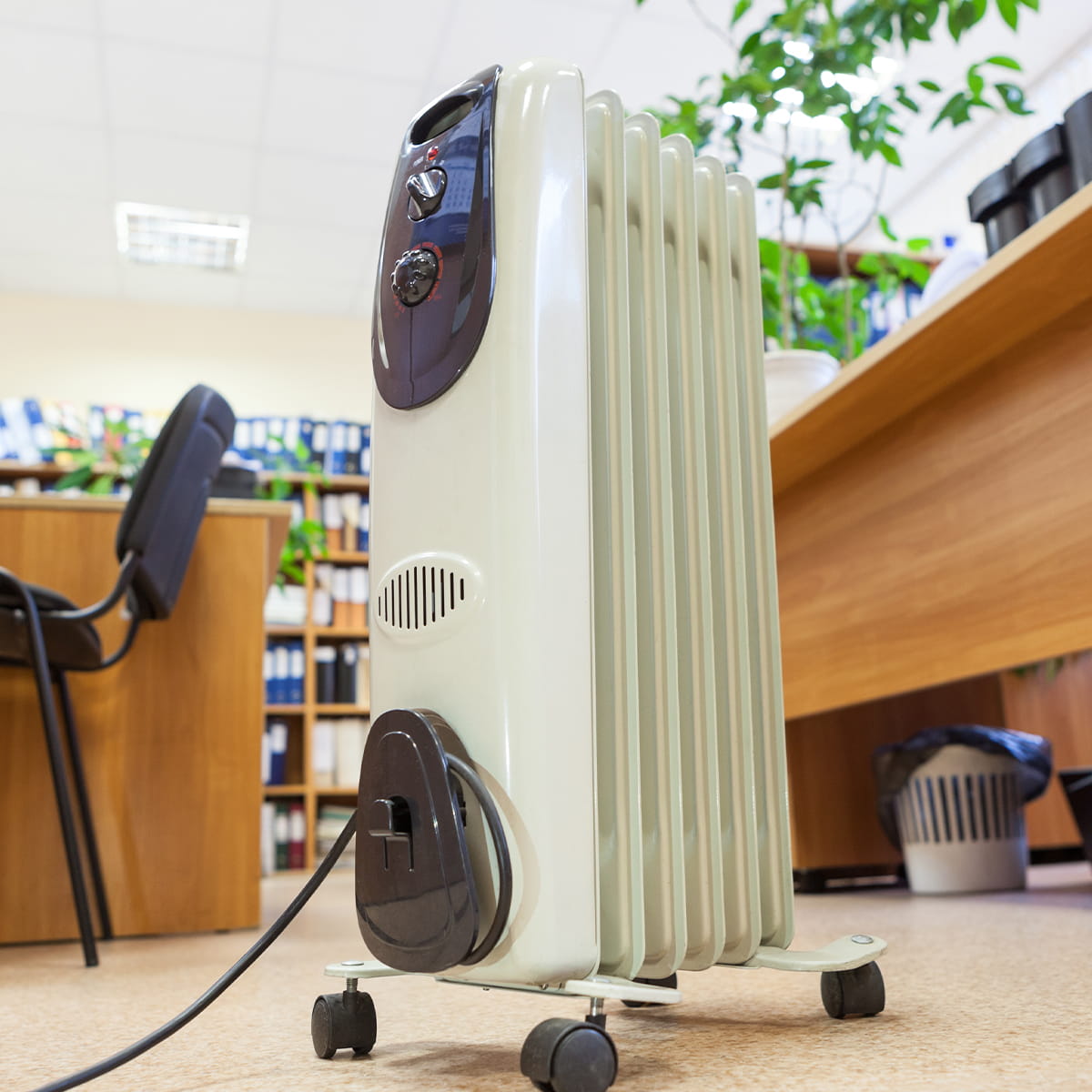Are you in breach of the Portable Heating Conditions specified in your insurance policy?
Why is it essential to obtain insurer approval before installing a heater in your business premises?

With the arrival of the colder winter months, some clients may be considering installing portable heaters in their premises. Before doing so, it’s important to be aware of the Portable Heating Conditions stipulated in the material damage section of your insurance policy and gain insurer approval for their usage.
Often, insurers will only allow portable heaters to be used in offices and canteens. If they are used in any other areas, you could be in breach of your policy conditions.
While no official maximum or minimum temperatures are mandated for workplaces, HSE guidance recommends maintaining an environment of at least 16˚ C or 13˚ C for physically demanding tasks. What constitutes a reasonable temperature range differs, however, depending on industry, workspace set-up and job responsibilities.
Adopting best practice
It’s essential that referral to the insurer is made first and foremost to obtain acceptance of portable heater usage. PIB recommends adhering to the following best practice guidelines.
Ideally, you should be able to provide the following details:
- Make and model of the heater(s)
- Age of heaters
- Intended periods of use (should be during business hours only)
- Location of use within the building
- Proposed risk management controls adopted (see Risk Control Measures section)
We recommend that clients read the publication ‘RISCAuthority RC15: Recommendations for the use of portable heaters in the workplace’, as it lays out the conditions that form the basis of acceptance criteria by many insurers. This RISCAuthority document:
- Provides a good level of practical advice to assist in the selection and management of suitable appliances, with a focus on their maintenance and safe use
- Outlines good practice for the management of portable heaters in the workplace where their use cannot be avoided
- Stipulates that the document considers heaters fuelled by electricity, LPG, liquid fuels (normally paraffin) and heaters designed for use in the open air
- Highlights that insurers will generally be more sympathetic towards the use of thermostatically controlled electrical heaters rather than heaters fuelled by LPG or liquid fuels, although some indirect fired versions may be considered depending on the environment (e.g. metal fabrication risks)
Risk Control Measures
Where heaters cannot be securely mounted or fixed at least 1.8 metres high to a wall or steel frame, PIB recommends the following risk control measures, which are likely to be requested by insurers:
- Heaters should be positioned on a stable level floor surface located in designated positions only (floor markings to be provided to prevent general movement)
- Heaters should be located at least 1 metre (preferably 2 metres) distance from combustible materials/ combustible items
- Use of electrically operated heaters with thermostatic and over-temperature controls (minimum of 2 safety devices)
- Heaters incorporating an anti-tilt safety switch are preferable
- Additional physical floor standing guards may be necessary (as advised by insurers)
- Cheaper domestic heaters are unlikely to be accepted: more robust heaters costing £200 to £300+ more likely to be acceptable
- Heaters to be located outside of any designated DSEAR (Dangerous Substances and Explosive Atmospheres Regulations) zones, unless suitably ATEX-rated (at least 10 metres distance from flammable liquids/ vapours)
- Electrical cables must be protected against mechanical damage and should be plugged into a permanent wall socket and NOT an extension cable reel or multi-socket adaptor, with hazard tape used to identify a potential trip hazard
- Heaters must not be located in pedestrian walkways and mechanical handling equipment transportation routes
- Heaters must only be operated during business hours and must not be set on timers pre- and post-occupancy
- Storage of clothing/ safety equipment for drying purposes on top of heaters to be prohibited and prominent notices displayed
- Written safe working practice adopted to ensure heaters are switched off as part of close down/lock up procedures
- Electrical heaters must be portable appliance tested (PAT) by a competent electrician at least annually.
Further action
PIB recommends that all clients considering using portable heaters read the document: ‘RISCAuthority RC15: Recommendations for the use of portable heaters in the workplace’.
Also, at this time of year, it is prudent to take appropriate winter weather precautions to reduce the risk of loss from burst water pipes, water ingress from blocked gutters and potential flood risks, and PIB fully recommends taking this action.

